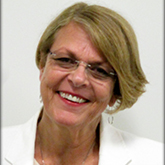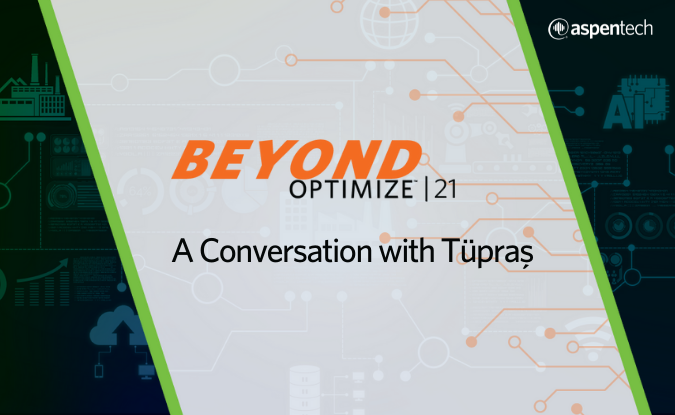Prior to his presentation at Beyond OPTIMIZE next week, WRE’s Harvey Welker discusses his presentation, Aspen Capital Cost Estimator™: Beyond Oil and Gas with our blog editor. Harvey likes to say that Aspen Capital Cost Estimator (ACCE) is “not just an estimating program, but rather a whole engineering department ‘in a box’.”
Marilyn Guisbond: Harvey, thanks for allowing us to interview you in anticipation of Beyond OPTIMIZE. Can you tell us about your career, how long have you worked in estimating and what industry experience you have to share?
Harvey Welker: I came to Philadelphia in 1967 and started with the Sun Oil Company as a project engineer. I was looking to go into project management, but then moved into project controls because it required less travel. After Sun Oil I went to FMC, and then went back to Sun Oil where I was able to network with contractors. About 22 years ago, I decided I would try my hand at Aspen estimating consulting on a part time basis. To my good fortune it became a full-time job. So actually, I became the first successful consultant in Aspen Capital Cost Estimator (ACCE)!
MG: Let’s talk about what industries other than Oil and Gas you have participated in. Anything you would like to highlight?
HW: I worked with Campbell’s Soup to help them implement Aspen and to build sanitary component models. That was quite interesting because the food industry has a different way designing equipment. Everything must be sterile.
Through my years as a consultant, I've also had the good luck to work on several projects beyond the oil and gas industry. For example, I have worked on quite a few ethanol projects. I have also estimated steel fabrication facilities and fertilizer plants. I think of myself as having been in almost all industries.
MG: Can you tell us some key advantages that ACCE has against other estimation methodologies?
HW: Thinking about the name Aspen Capitol Cost Estimator, I wish it would have been named Aspen Engineering System because it's not just an estimating program, it is an engineering program. In fact, it's a whole engineering department in a box and there's no other software with that ability.
In fact, it's a whole engineering department in a box and there's no other software with that ability.
I'll tell you a story to illustrate why the program is so powerful. I was working for Sun Oil putting in two huge spheres on a busy highway. I was finishing up the estimate when I received quotes for the spheres. I never accept anything at face value. I always go to ACCE first to see how the capital cost estimator designs the equipment components and what the ACCE design system is telling me.
Can you imagine putting two spheres next to a busy highway and having one of those things explode? The spheres were respecified to standard carbon steel. The appropriation budget was correctly priced and the project was completed. Aspen designed the spheres with six inches wall thickness and priced each sphere a million dollars greater than the quotation. I knew something was wrong. I began to read the quotation specifications, including the metallurgy. The quotation sphere wall thickness was about three inches. I checked with an engineer in the inspection department. He said we don't use the material specified in the quotation. We specify carbon steel because the unique material specified in the quote fails catastrophically with no early notice of deterioration versus carbon steel that slowly shows indications of failure over a long period of time successfully. So that's the power tool: ACCE.
MG: Let’s switch gears a bit to discuss Beyond OPTIMIZE and your session on ACCE… Can you give us one or two highlights that our audience can look forward to hearing more about during your presentation: ACCE: Beyond Oil and Gas?
HW: The objective of the presentation is to show how ACCE can effectively be applied in all industries.
ACCE has building blocks that can be applied to any industry. The components and elements have roots in the oil and gas industry, but that doesn't mean those components can't be used in other industries. A simple example, a bulk bag unloader. I take a bulk bag unloader and I change it into a feeder. It reflects the way you can take existing components and transform them into something totally different.
MG: Profitability is a key metric in digitalization planning – can you give us an example or two of how you help increase profitability with ACCE?
HW: The most dramatic example I have was when I was working with Sam Strobert at DuPont. DuPont wanted to build a chemical plant in Spain. Sam did the estimate and the business manager was shocked at the price. Sam looked him in the eye and said, “Well, can you meet your rate of return requirement if we build a larger capacity plant?” Sam then used ACCE’s Decision Analyzer to scale the plant to 150% capacity. The costs only went up around 18%. This was some years ago, and now the plant is successfully operating producing product.
ACCE will rescale to your unique design and provide an accurate answer.
Another example that comes to mind is when I had some project managers asking, why are electrical costs so high? I told them you’ve got all your electrical power drivers supplied by one motor control center at a distance 500 – 1000 feet from the process area. If you make two motor control centers and move them closer to the process area drivers, you could save a significant amount of money. In today's dollars, the plant probably saved about $3 million. After that, the company integrated ACCE in their design protocol.
MG: What can you say about how easy or intuitive is it to use ACCE?
HW: Here’s my advice on using ACCE…it’s as if you have a barge that’s being tied up to the dock. Cut your moorings! Once you’re ready to use ACCE, don’t customize it right away – sure cosmetically it’s fine – like adding your logo. But otherwise, use what comes out of the box. Learn as you go and implement best practices; the software will instruct and teach you. You can also take a course. You will find that using the tools and integrating them with other solutions, like HYSYS for example, is intuitive and easy to pick up.
ACCE also provides the added benefit of being a communication tool when used in this way. It can effectively be applied to all industries, providing building blocks that are not unique to any given industry.
MG: Have you gained any value from the integrated nature of AspenTech’s performance engineering solution? (For example, the integration with Aspen HYSYS®?)
HW: It takes a good process engineer to do this, but if they work through their options in HYSYS and Aspen Process Economic Analyzer (APEA) first. This will sort out the designs that I won't have to estimate. The process engineer just sends me the IZP/native file to load into Aspen Capital Cost Estimator and make the necessary changes. ACCE provides additional benefits as a communications tool. It's not just data entry device with calculations, it is a cost-effective communication instrument!
MG: Do you have any advice for organizations that might want to make similar gains in profitability by integrating ACCE into their estimation processes?
HW: My advice? I’d tell them to integrate your legacy data into ACCE and throw away all your old practices.
My Beyond OPTIMIZE session, ACCE: Beyond Oil and Gas will include ACCE integration best practices, how to run options studies, and how to use the solution to sell more product, more profitably.
MG: Now that we’ve heard a little about your session, we’d love to know what other sessions you are looking forward to attending?
HW: I am very interested in the sessions that cover OptiPlant integration. I am interested in hearing customers talk about revamp work and other solutions that are integrated with ACCE; OptiPlant being the newest and most exciting. I am also always looking for new ways to input data, and hearing from other users often provides information that can help improve current best practices.
Learn more about and register for Beyond OPTIMIZE: New Insights in Performance Engineering here.
.


.png?h=415&w=675&la=en&hash=29CF2F24C07A7555854BCB56DF38AFEA)

Leave A Comment